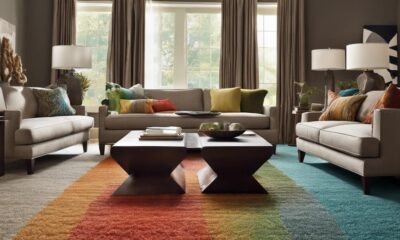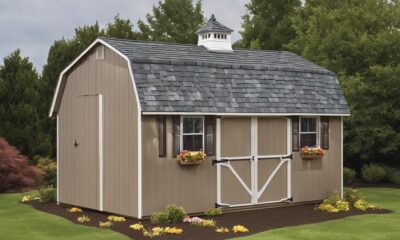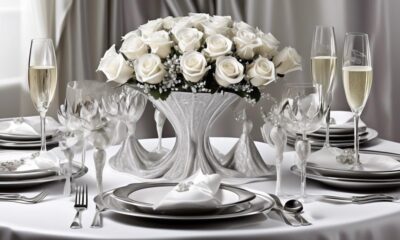Architecture Home Styles
7 Different Types of Houses in Portugal
Journey through the diverse architecture of Portugal, from Alentejo cottages to Madeira cliffside homes, and uncover the unique stories behind each fascinating house.
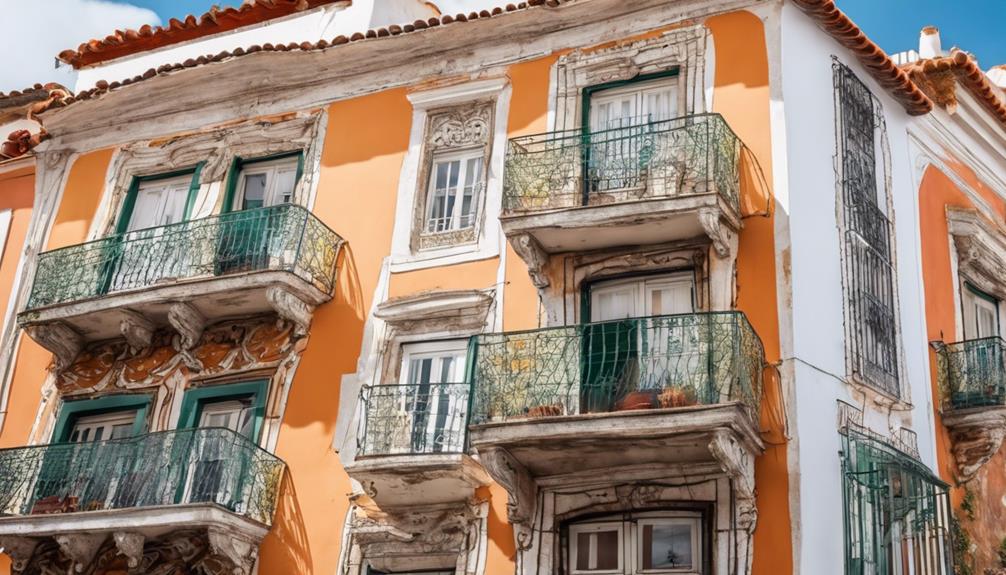
Have you ever wondered what makes the houses in Portugal so unique and diverse?
From traditional Alentejo cottages to modern Madeira cliffside homes, the architecture in Portugal offers a fascinating glimpse into the country's rich history and varied landscapes.
Each type of house holds its own charm and character, reflecting different cultural influences and regional aesthetics.
Explore the distinct features of these seven different types of houses in Portugal and discover the stories they have to tell.
Key Takeaways
- Traditional Alentejo Cottages and Rustic Azores Stone Houses showcase Portugal's iconic rural and natural architecture.
- Colorful Lisbon Townhouses and Historic Porto Palaces represent vibrant urban living and architectural heritage.
- Charming Douro Valley Quintas and Modern Madeira Cliffside Homes offer serene retreats with stunning surroundings and modern comforts.
- Coastal Algarve Villas provide luxurious coastal living experiences with exclusive amenities and breathtaking ocean views.
Traditional Alentejo Cottages
Nestled amidst the rolling landscapes of the Alentejo region in Portugal, Traditional Alentejo Cottages stand as iconic representations of rural architecture blending seamlessly with nature. These country residences, with their whitewashed walls, thatched roofs, and chimneys, exude a simplistic charm that's both functional and aesthetically pleasing. Influenced by the region's hot climate and agricultural heritage, these cottages are designed to provide respite from the sun while harmonizing with the natural surroundings.
The design of Alentejo cottages reflects a deep understanding of the local environment, where cool interiors offer a welcome escape from the heat outside. Renovated cottages often retain their traditional features while incorporating modern amenities, making them popular choices for holiday homes or rural retreats. The integration of these houses into the landscape showcases a commitment to sustainability and a desire to preserve the region's architectural heritage. In essence, Traditional Alentejo Cottages serve as a testament to the timeless appeal of simple yet elegant country living in Portugal.
Colorful Lisbon Townhouses

Preserving the charm of Portugal's rural architecture, the colorful Lisbon townhouses, known as 'casas coloridas,' captivate with their vibrant facades and intricate details in historic neighborhoods like Alfama and Bairro Alto. These traditional townhouses stand out for their:
- Vibrant Facades: The striking colors adorning the exteriors of these properties reflect the rich heritage and artistic flair of Lisbon's architecture.
- Intricate Tile Work: The mosaic patterns of azulejos, a traditional Portuguese tile art, embellish many of these townhouses, adding a unique touch to each property.
- Charming Architectural Details: From wrought iron balconies to ornate doorways, these townhouses boast a plethora of architectural elements that enhance their visual appeal and historical significance.
The blend of old-world charm and modern living in these properties showcases a harmonious coexistence between preservation and innovation, making colorful Lisbon townhouses a sought-after choice for property buyers looking to own a piece of Portugal's cultural legacy.
Historic Porto Palaces
Steeped in grandeur and history, the Historic Porto Palaces stand as magnificent testaments to Portugal's architectural heritage and cultural richness. These opulent residences in Porto showcase intricate architectural details and elegant interior designs, reflecting the wealth and sophistication of past eras. Many of these palaces have undergone transformations, now serving as luxury hotels, museums, or cultural centers, welcoming visitors to experience their grandeur firsthand.
Perched majestically, overlooking the Douro River and the city skyline, the Porto Palaces offer breathtaking views that add to their allure. Exploring these palaces provides a fascinating journey through Porto's rich history and cultural heritage, offering insights into the lifestyles of the affluent in bygone times. The blend of architectural splendor and historical significance makes these palaces unique among the various types of houses in Portugal, attracting tourists and architecture enthusiasts alike.
With each palace telling a story of wealth, power, and artistic finesse, visiting them is a memorable experience that highlights the grandeur of Portugal's past.
Charming Douro Valley Quintas
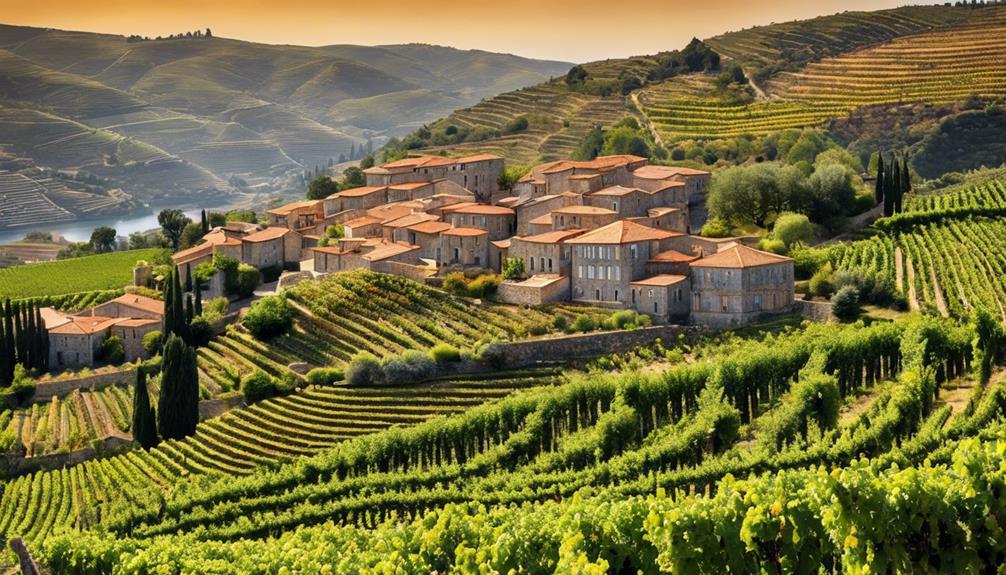
When we think of Douro Valley Quintas, what often comes to mind are the exquisite historic architecture dotting the landscape, the picturesque vineyard surroundings as far as the eye can see, and the irresistible charm of rural hospitality that envelops visitors.
These Quintas not only offer a glimpse into the winemaking traditions of Portugal but also provide a serene escape into a world where time seems to slow down.
The combination of architectural beauty, natural splendor, and warm hospitality makes a stay at one of these Quintas an unforgettable experience.
Quintas' Historic Architecture
Nestled in the picturesque Douro Valley of Portugal, the Quintas showcase a historic architectural elegance that captures the essence of traditional Portuguese design.
Key Points:
- Traditional Charm: Quintas feature tiled roofs, whitewashed walls, and ornate facades, reflecting Portugal's design heritage.
- Renovation into Luxury: Many Douro Valley Quintas have been transformed into boutique hotels, offering guests a blend of historic charm and modern luxury.
- Cultural Heritage: The architecture of Quintas highlights the region's rich cultural heritage and skilled craftsmanship, creating a unique experience for visitors.
Staying at a Quinta allows for a firsthand experience of Portugal's historic estates, immersing guests in the beauty and elegance of the region's architectural past.
Vineyard Surroundings
The charming Douro Valley Quintas, surrounded by vineyards and steeped in traditional Portuguese architectural beauty, offer a unique living experience that seamlessly blends heritage with modern comfort. Living in these Quintas allows for an immersive wine culture experience while enjoying the breathtaking views of the Douro River and terraced vineyards. Many of these Quintas have undergone renovations, transforming them into luxurious estates or boutique hotels where residents can indulge in the region's rich history. The architecture of these Quintas reflects a harmonious combination of traditional Portuguese design and contemporary amenities, ensuring a comfortable lifestyle. For those seeking a more intimate setting, some Quintas offer apartments with two bedrooms, allowing residents to fully experience the charm of the Douro Valley.
| Feature | Description |
|---|---|
| Location | Surrounded by vineyards in the Douro Valley |
| Accommodation | Luxurious estates, boutique hotels, and apartments with two bedrooms |
| Views | Stunning vistas of the Douro River and terraced vineyards |
| Cultural Aspect | Immersive wine culture experience with a focus on Port wine production |
Rural Hospitality Charm
Surrounded by verdant vineyards and offering a tranquil escape, the charming Douro Valley Quintas beckon visitors with their authentic rural hospitality charm.
3 Reasons to Experience Quintas in the Douro Valley:
- Unique Hospitality: Quintas offer a one-of-a-kind experience, blending traditional rural charm with modern comforts.
- Immersive Experiences: Guests can partake in wine tastings, vineyard tours, and culinary delights, all while surrounded by breathtaking landscapes.
- Peaceful Retreat: Staying at a quinta in the Douro Valley provides a serene getaway, allowing guests to unwind and connect with Portugal's rural hospitality essence.
These quintas not only showcase the beauty of the Douro Valley but also provide a gateway to the rich cultural heritage and warm hospitality of the region.
Coastal Algarve Villas

We love how Coastal Algarve villas in Portugal offer stunning ocean views and come equipped with luxury amenities, making them an attractive choice for those seeking a lavish seaside lifestyle.
These villas boast spacious terraces and swimming pools, allowing residents to bask in the beauty of the Algarve region while enjoying the comfort of modern living.
With a strong demand for quality properties in sought-after locations like Albufeira and Vilamoura, Coastal Algarve villas provide the perfect blend of relaxation and sophistication.
Stunning Ocean Views
With panoramic ocean vistas stretching as far as the eye can see, Coastal Algarve villas in Portugal offer an unparalleled blend of luxury and natural beauty. These stunning properties cater to discerning buyers looking for the perfect mix of seaside tranquility and elegant living.
Here are a few key features of these coastal villas:
- Breathtaking Views: Coastal Algarve villas boast some of the most breathtaking ocean views in Portugal, providing a constant connection to the sea.
- Luxurious Amenities: Many of these villas come equipped with private pools and terraces, allowing residents to enjoy the beauty of the ocean from the comfort of their own home.
- Spacious Design: The Algarve region is renowned for its spacious single-storey villas, offering ample rooms and outdoor living spaces ideal for embracing the coastal lifestyle.
Luxury Amenities Included
Luxury amenities are a hallmark of Coastal Algarve villas, elevating the living experience with exclusive features and top-notch facilities. These properties often boast private swimming pools overlooking the sea, outdoor Jacuzzis, landscaped gardens, and spacious terraces. Residents can enjoy direct beach access, concierge services, home theaters, wine cellars, and private gyms, making every moment luxurious. In the living room, panoramic windows offer breathtaking views, while bedrooms would typically feature high-end finishes and comfortable spaces. Security systems and smart home technology ensure convenience and safety. Below is a table highlighting some of the luxury amenities found in Coastal Algarve villas:
| Luxury Amenities | Description |
|---|---|
| Private Swimming Pool | Stunning sea views |
| Outdoor Jacuzzis | Relaxation and comfort |
| Home Theaters | Entertainment at its finest |
Rustic Azores Stone Houses
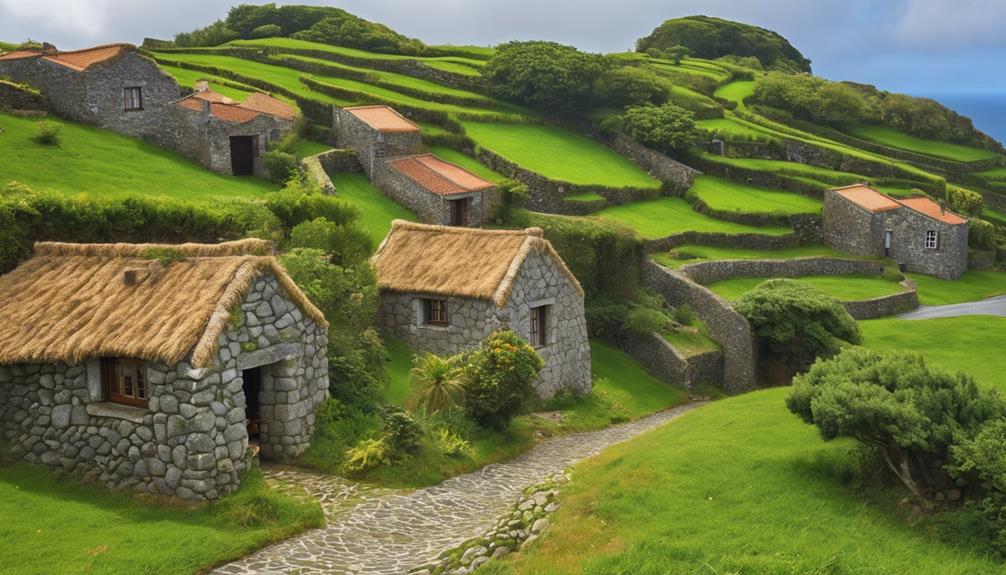
Nestled amidst the lush landscapes of the Azores archipelago, Rustic Azores stone houses stand as enduring testaments to traditional craftsmanship and unique architectural heritage. These dwellings are a treasure trove of historical significance and cultural richness, offering a glimpse into the past while embracing the future of real estate market innovations in Property Types.
Key Features of Rustic Azores Stone Houses:
- Unique Construction: Crafted with volcanic basalt stones, these houses boast sturdy structures that have withstood the test of time.
- Natural Insulation: Thick stone walls provide excellent insulation, ensuring a comfortable living environment year-round without the need for modern amenities.
- Charming Aesthetic: Adorned with white or brightly colored trims and thatched roofs made from local materials, these houses blend seamlessly with the picturesque rural landscape.
The architecture of Rustic Azores stone houses not only reflects the historical and cultural heritage of the Azores but also serves as a beacon of innovation in the evolving real estate market.
Modern Madeira Cliffside Homes
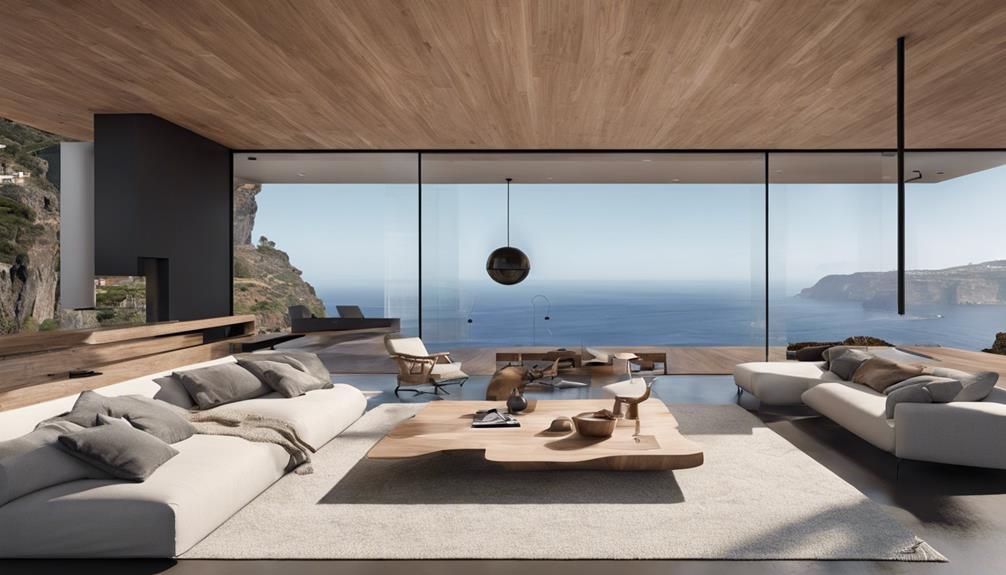
Perched along the rugged cliffs of Madeira, modern cliffside homes offer unparalleled views of the Atlantic Ocean, seamlessly blending with the island's natural beauty. These architecturally stunning properties not only provide breathtaking vistas but also prioritize sustainability and eco-conscious design. Many of these cliffside homes feature expansive windows that flood the interiors with natural light, creating a seamless connection between the indoor and outdoor spaces. Living in a cliffside home in Madeira offers a tranquil escape from the hustle and bustle of city life, allowing residents to immerse themselves in the serenity of nature.
| Feature | Description |
|---|---|
| Ocean Views | Panoramic vistas of the Atlantic Ocean from every corner of the property. |
| Sustainable Design | Incorporation of eco-friendly elements for a greener way of living. |
| Spacious Two Bedrooms | Comfortable living spaces with two bedrooms for a cozy yet modern feel. |
Buying property in Portugal, particularly these modern Madeira cliffside homes with two bedrooms, offers a unique opportunity to own a piece of paradise while indulging in innovative architectural design and sustainable living practices.
Frequently Asked Questions
What Are the Portuguese Names for Houses?
Sure thing!
In Portugal, houses can be classified as 'apartamentos' (apartments) and 'vivendas' or 'moradias' (separate houses).
Apartments are labeled with 'T' for the number of bedrooms, while separate houses use a 'V' prefix.
This distinction helps in property listings and identifying different types of residential units in Portugal.
What Is a Townhouse in Portugal?
When you think of townhouses in Portugal, picture multi-story homes with shared walls, a blend of affordability and space efficiency. Ideal for urban living, townhouses create a sense of community while maintaining privacy.
Shared amenities like pools enhance the appeal, catering to modern lifestyle needs. In Portugal, townhouses offer a compact, convenient housing option that balances social connection and personal space.
What Is a T4 House in Portugal?
A T4 house in Portugal is a property with four separate bedrooms, providing ample space for larger families or individuals seeking extra room.
The 'T' in T4 stands for 'Tipo,' meaning 'Type' in Portuguese. These houses are common in Portugal and are well-suited for families needing more living space.
The number following the 'T' indicates the total number of bedrooms in the house, making T4 houses a popular choice for those looking for spacious accommodations.
What Are the Houses Made of in Portugal?
We build houses in Portugal from durable materials like concrete, brick, and stone for longevity and thermal comfort. Traditional Portuguese homes often showcase terracotta roof tiles and vibrant facades, adding a distinctive flair.
Modern residences may integrate sustainable elements such as wood, glass, and steel for environmentally conscious living spaces. Older dwellings might feature adobe or mud brick walls, reflecting time-honored construction techniques.
Renovated properties harmonize traditional charm with contemporary amenities, blending the best of both worlds.
How is the Boho Style Reflected in Traditional Portuguese Housing?
Traditional Portuguese housing reflects the boho style through its eclectic mix of colors, patterns, and textures. The use of vintage furniture, handmade textiles, and natural elements like wood and stone creates a relaxed and free-spirited atmosphere. The difference between boho styles lies in the cultural influences and design elements unique to each region.
Conclusion
In Portugal, homes aren't just structures; they're stories waiting to be told. From the traditional Alentejo cottages to the modern Madeira cliffside homes, each type of house embodies a unique charm and character.
Like pieces of a colorful mosaic, these diverse housing options come together to paint a vivid picture of Portugal's rich architectural heritage. So, whether you prefer the historic Porto palaces or the rustic Azores stone houses, there's a home in Portugal waiting to be your next chapter.
- About the Author
- Latest Posts
Introducing Ron, the home decor aficionado at ByRetreat, whose passion for creating beautiful and inviting spaces is at the heart of his work. With his deep knowledge of home decor and his innate sense of style, Ron brings a wealth of expertise and a keen eye for detail to the ByRetreat team.
Ron’s love for home decor goes beyond aesthetics; he understands that our surroundings play a significant role in our overall well-being and productivity. With this in mind, Ron is dedicated to transforming remote workspaces into havens of comfort, functionality, and beauty.
Architecture Home Styles
5 Reasons Why Modular Homes Lose Value Faster
Yearning to understand why modular homes depreciate faster? Explore the five key reasons behind this phenomenon and their implications for buyers.

You may not realize that modular homes can lose value quicker than traditional stick-built homes due to various reasons. From construction quality issues to perceptions in the resale market, there are numerous factors that can affect the value of modular properties.
Understanding these aspects is crucial for anyone considering investing in a modular home. Let's explore the nuances behind why modular homes might lose value at a quicker pace and what implications this could have for potential buyers.
Key Takeaways
- Lower quality materials and construction standards contribute to faster depreciation.
- Market misconceptions and traditional preferences affect resale value.
- Limited customization options and transportation costs impact depreciation rates.
- Neglecting maintenance leads to costly issues and decreased value over time.
Construction Quality and Materials
When considering the value of modular homes, the construction quality and choice of materials play a crucial role in determining their long-term durability and resale potential. Modular homes are constructed in sections off-site and then assembled on the final property. The construction quality of these homes can vary significantly depending on the manufacturer and the standards they adhere to. Some modular homes may use lower quality materials to reduce costs, which can lead to faster deterioration and a decrease in overall value.
The choice of materials in modular construction is vital for the longevity and maintenance requirements of the home. Inspecting the construction quality and materials used in a modular home is imperative for assessing its long-term value. Investing in a modular home with high-quality construction and materials can help maintain its value over time. By ensuring that the materials used meet high standards, the durability and resale potential of a modular home can be significantly enhanced.
Resale Market Perception
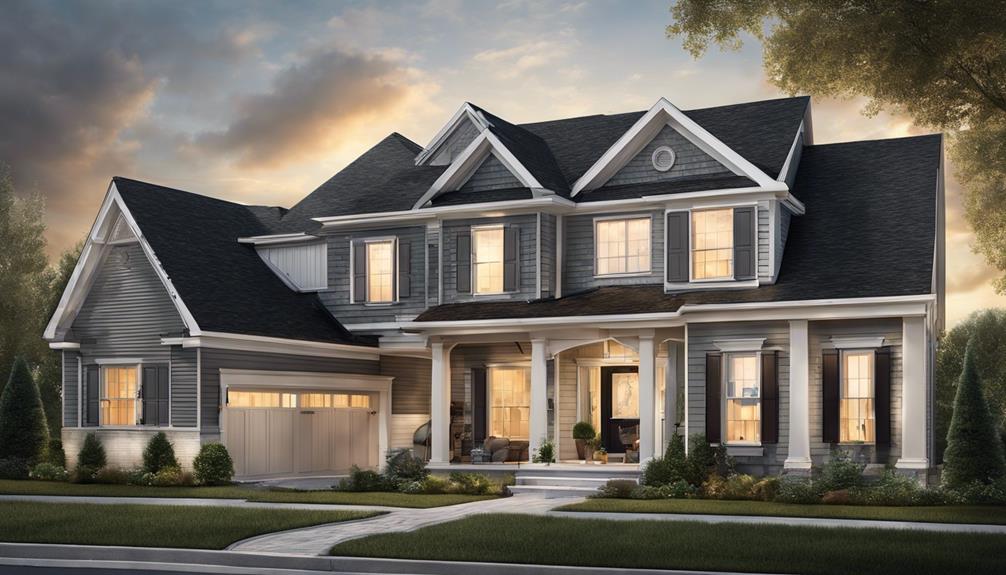
The resale market perception of modular homes can significantly impact their value and marketability, potentially leading to challenges despite their appraised value comparable to stick-built homes. When it comes to real estate, the pros and cons of modular homes in the resale market are crucial considerations:
- Misconceptions: Some buyers may hold misconceptions about modular homes, affecting their willingness to purchase, which can lower resale value.
- Public Perception: Despite their quality and durability, public perception of modular homes may not align with reality, impacting resale market interest.
- Traditional Preference: Buyers who lean towards traditional stick-built homes might overlook modular options, limiting the resale market pool.
- Effective Marketing: Working with a Clever Agent who understands the unique selling points of modular homes can help address misconceptions and increase visibility in the resale market.
Understanding and addressing these factors are essential to navigate the real estate landscape and maximize the resale value of modular homes.
Depreciation Rates Compared to Stick-Built Homes
Comparing depreciation rates between modular homes and stick-built homes reveals significant differences influenced by factors such as construction type and perceived value. Stick-built homes generally maintain their value better over time compared to modular homes due to the higher quality construction and materials used. Modular homes, being prefabricated off-site, often face quicker depreciation ranging from 10% to 20% over 10 years. In contrast, stick-built homes may only depreciate around 5% to 10% during the same period. Factors like limited customization options, transportation expenses, and potentially lower construction quality contribute to the faster depreciation of modular homes. Additionally, advancements in home construction technologies can impact how quickly modular homes lose value compared to stick-built homes. Understanding these depreciation rates is crucial for homeowners seeking to optimize their investment and resale potential.
| Aspect | Modular Homes Depreciation Rate | Stick-Built Homes Depreciation Rate |
|---|---|---|
| Construction Quality | Lower | Higher |
| Customization | Limited | Extensive |
| Material Quality | Standard | High |
| Transportation Costs | Higher | Lower |
| Depreciation Rates | 10% to 20% over 10 years | 5% to 10% over 10 years |
Maintenance Challenges and Costs

To ensure the long-term value of a modular home, regular maintenance is essential in preventing rapid depreciation. Neglecting maintenance can lead to costly issues such as roof leaks, mold growth, and structural damage, ultimately decreasing the home's value. Addressing maintenance problems promptly is crucial to preserving the integrity and worth of a modular home. Additionally, implementing a proactive maintenance schedule not only prevents minor issues from escalating but also contributes to maximizing modular building lifespan. Routine inspections of critical components like plumbing, electrical systems, and the foundation can help identify potential problems early. By staying diligent with upkeep, homeowners can protect their investment and ensure their modular home remains functional and valuable for years to come.
Here are some key points to consider regarding maintenance challenges and costs in modular homes:
- Preventative Measures: Regular inspections and upkeep can help identify potential problems early on, saving homeowners from more extensive and expensive repairs down the line.
- Cost-Effective Solutions: Investing in routine maintenance may seem like an added expense, but it's a cost-effective way to maintain the value of a modular home over time.
- Long-Term Value: By staying on top of maintenance tasks, homeowners can ensure that their modular home retains its value and remains a sound investment for the future.
- Resale Considerations: Neglecting maintenance can result in decreased resale value, making it essential for homeowners to prioritize regular upkeep to maximize their return on investment.
Limited Appreciation Potential
Limited by perceptions of lower value compared to traditional stick-built homes, modular homes often face challenges in appreciating at the same rate in the real estate market. While modular homes offer various benefits such as cost-effectiveness and quicker construction timelines, their appreciation potential can be limited due to factors like limited customization options and the stigma of being of lower quality. The perception that modular homes may not be as durable or aesthetically pleasing as traditional homes can deter some buyers, impacting resale value and appreciation potential.
Moreover, the higher quality of modern modular home options isn't always fully recognized in the real estate market, contributing to their slower appreciation rates. Factors such as location and market trends also play a significant role in determining the appreciation potential of modular homes. To improve their appreciation potential, it's essential for the industry to educate consumers about the benefits and quality of modular homes, emphasizing their durability, energy efficiency, and design possibilities.
Frequently Asked Questions
Why Do Modular Homes Lose Value?
When modular homes lose value, it's like a fading melody losing its charm. Several factors contribute to this decline, including limited customization options, potential rapid depreciation as styles evolve, market perception challenges, quality issues during assembly, and location influences.
These elements intertwine to create a tapestry of reasons why the value of modular homes can diminish over time.
What Is the Downfall of a Modular Home?
The downfall of a modular home can be attributed to factors like:
- Limited customization options
- Challenges in securing financing
- Potential construction errors
- Public misconceptions about their quality
These elements can contribute to a faster depreciation rate compared to traditional stick-built homes.
Understanding these issues is crucial for buyers and sellers alike to make informed decisions regarding modular homes.
Do Modular Homes Depreciate Fast?
Yes, modular homes can depreciate fast. Factors like the perceived lower quality compared to traditional homes, limited customization options, and improper maintenance contribute to this trend.
According to recent data, modular homes can lose value up to 15% more rapidly than site-built houses. Understanding these nuances can help homeowners make informed decisions when considering the purchase or sale of a modular home.
Why Do Manufactured Homes Depreciate?
Manufactured homes depreciate faster due to materials, construction methods, and perception. They're often seen as personal property, not real estate, impacting long-term value. Limited customization options and perceived lower quality contribute to quicker depreciation.
Market fluctuations, oversupply in some areas, maintenance issues, shorter lifespan, and challenges in financing and resale all play a role in faster depreciation rates. These factors collectively drive the faster depreciation of manufactured homes compared to traditional stick-built homes.
Conclusion
In conclusion, modular homes may experience accelerated depreciation rates due to various factors such as construction quality, resale market perception, depreciation rates compared to stick-built homes, maintenance challenges, and limited appreciation potential.
While these considerations may pose challenges for homeowners, it's essential to approach them with a pragmatic mindset to navigate potential financial impacts.
Ultimately, understanding these dynamics can help individuals make informed decisions when it comes to investing in a modular home.
- About the Author
- Latest Posts
Introducing Ron, the home decor aficionado at ByRetreat, whose passion for creating beautiful and inviting spaces is at the heart of his work. With his deep knowledge of home decor and his innate sense of style, Ron brings a wealth of expertise and a keen eye for detail to the ByRetreat team.
Ron’s love for home decor goes beyond aesthetics; he understands that our surroundings play a significant role in our overall well-being and productivity. With this in mind, Ron is dedicated to transforming remote workspaces into havens of comfort, functionality, and beauty.
Architecture Home Styles
Do Stone Houses Really Last Longer? Find Out Here
Mysteries surrounding the longevity of stone houses are unveiled in this intriguing exploration – do they really stand the test of time?

Let’s be real – in a world where trends are constantly changing, the concept of durability in our homes feels like a forgotten skill.
However, have you ever wondered if stone houses really stand the test of time? The allure of stone structures is undeniable, but do they truly outlast their modern counterparts?
Let's explore the facts behind the endurance of stone houses and uncover the secrets that might surprise you.
Key Takeaways
- Stone houses have a proven track record of lasting for centuries.
- Minimal maintenance requirements save time and effort.
- Resistance to pests, decay, and environmental factors ensures structural soundness.
- Long-term cost savings due to reduced repairs and replacements.
Benefits of Stone Construction
Stone construction offers unparalleled durability and strength, making stone houses a long-lasting and resilient choice for architectural stability. In comparison to wood frame structures, stone houses excel in longevity due to their robust nature. While wood frames are susceptible to rot, pests, and fire, stone construction is inherently fireproof, bug-proof, and rot-free. This crucial difference ensures that stone houses can withstand the test of time, lasting for centuries without the need for extensive maintenance or costly repairs.
Wood frame structures, on the other hand, require regular upkeep to combat decay and pest infestations, making them less durable in the long run. Stone houses, with their minimal maintenance requirements and resistance to environmental decay, offer a sustainable housing solution that retains its structural integrity over time. Additionally, the superior insulation properties of stone contribute to energy efficiency, providing both comfort and cost savings for homeowners in the long term.
Factors Affecting Longevity
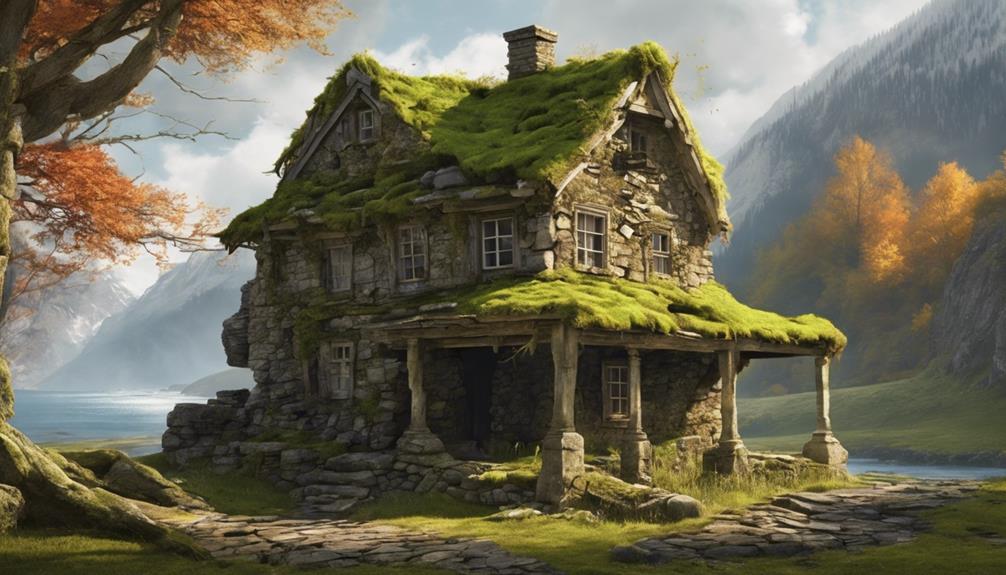
Given the critical role of quality materials and construction techniques in the longevity of stone houses, it's essential to consider various factors that can influence the lifespan of these structures. The quality of the stone used is paramount, as durable stones can withstand the test of time better than inferior materials.
Proper foundation and structural design are key components in ensuring the longevity of stone buildings, providing stability and resistance to external forces. Climate conditions also play a significant role, with exposure to extreme temperatures and moisture potentially impacting the lifespan of stone structures.
Despite these considerations, historical examples show that well-built stone houses can stand for centuries, highlighting their potential for long-lasting durability. When constructed using quality materials and craftsmanship, stone houses can prove to be easy to build and maintain, offering a sustainable and enduring housing solution for generations to come.
Drawbacks to Consider
While stone houses offer exceptional longevity and durability, several drawbacks need to be carefully considered before committing to this type of construction. Constructing a stone house may require specialized labor and skills, potentially increasing initial costs. Repairing damaged or deteriorating stone can be challenging and costly compared to other building materials, demanding professionals with years of experience.
Additionally, the nature of stone limits the flexibility for modifications or additions, making it crucial to plan extensively before construction begins. Moreover, in regions prone to earthquakes, stone structures can be susceptible to cracking or shifting over time, highlighting the importance of proper foundation and structural design. Insulation in stone houses may also need enhancement in extreme climates to ensure energy efficiency, adding to the maintenance considerations.
Therefore, while the durability of stone houses is renowned, individuals should weigh these drawbacks carefully before embarking on such a construction project.
Expert Insights on Stone Houses

In considering the expert insights on stone houses, it becomes evident that proper foundational and wall construction techniques are paramount for ensuring their long-term durability and structural integrity. Expert builders stress the importance of starting building stone houses on robust foundations that can bear the weight of the structure and resist shifting over time.
The walls must be carefully constructed using high-quality stone and mortar, ensuring a secure and stable framework. By paying meticulous attention to detail during the initial phases of construction, such as aligning stones correctly and evenly distributing weight, builders can create a solid structure less prone to issues down the line.
Professional guidance on sealing techniques, adequate drainage systems, and appropriate material selection further contribute to enhancing the longevity of stone houses. Historical examples of enduring stone structures underscore the significance of following expert advice when embarking on the journey to construct a stone house that stands the test of time.
Making an Informed Decision
When considering the decision to invest in a stone house, one must carefully weigh the long-term benefits of its durability and minimal maintenance requirements. Stone houses have a proven track record of lasting for centuries, outlasting many other building materials due to their robust nature. The minimal maintenance needed for stone structures not only saves time and effort but also contributes significantly to their longevity. Additionally, the resistance of stone houses to pests, decay, and environmental factors ensures that they remain structurally sound over time. Properly constructed stone houses maintain their appearance and strength, providing a sense of security and stability to homeowners.
Investing in a stone house can lead to long-term cost savings, as the durability of the material reduces the need for frequent repairs and replacements. Moreover, a stone house serves as a valuable asset, retaining its value well into the future. By choosing a stone house, individuals can make an informed decision that offers both practical benefits and a sense of permanence.
Frequently Asked Questions
How Long Will a Stone House Last?
Stone houses can last for centuries due to the inherent strength and resilience of the material. Properly constructed stone structures require minimal maintenance and can withstand environmental factors like weathering, pests, and decay.
Their durability makes them a wise long-term investment, outlasting many other construction materials. With the right care, a stone house can maintain its integrity for generations, standing strong against the test of time.
Why Don T People Build Stone Houses Anymore?
We've moved away from stone houses due to cost, material availability, and construction speed. Modern methods prioritize efficiency and affordability, making stone construction less common. Maintenance and repair are more complex and costly for stone structures compared to newer materials.
Despite this, some still opt for stone for its unique charm and durability. This shift reflects our evolving needs and priorities in construction.
What Are the Disadvantages of Stone Houses?
Building stone houses presents several challenges. Repairing and replacing stones can be costly and complicated. Skilled labor is essential for construction and maintenance.
The weight of stones makes transportation and handling difficult. Renovations may be limited due to the nature of stone construction. These drawbacks contribute to the higher initial cost and maintenance requirements associated with stone houses.
Is a Stone House a Good Investment?
Stone houses offer a solid investment with potential longevity and timeless aesthetics. Their durability has been proven over centuries, providing low maintenance costs and resistance to pests. These structures are fireproof and weather-resistant, ensuring continued protection.
Their rarity in the market increases demand and potential resale value. Overall, investing in a stone house can be a wise choice for those seeking a long-term, valuable asset.
Conclusion
In conclusion, stone houses truly stand the test of time, offering unparalleled durability and longevity. Their resistance to fire, pests, and environmental wear makes them a wise investment for the future. Additionally, the natural aesthetics and timeless charm of stone houses add significant value to their appeal. While weighing the stone house pros and cons, it’s evident that their low maintenance requirements and ability to regulate interior temperatures are significant advantages. However, potential drawbacks such as higher initial construction costs and the need for skilled labor should also be taken into account when making a decision.
With their unique aesthetic appeal and energy-saving benefits, stone structures are a sustainable choice for construction. In a world where trends come and go, stone houses remain a rock-solid option that will last for generations to come, a testament to their timeless endurance.
- About the Author
- Latest Posts
Introducing Ron, the home decor aficionado at ByRetreat, whose passion for creating beautiful and inviting spaces is at the heart of his work. With his deep knowledge of home decor and his innate sense of style, Ron brings a wealth of expertise and a keen eye for detail to the ByRetreat team.
Ron’s love for home decor goes beyond aesthetics; he understands that our surroundings play a significant role in our overall well-being and productivity. With this in mind, Ron is dedicated to transforming remote workspaces into havens of comfort, functionality, and beauty.
Architecture Home Styles
Why Are German Houses So Sturdy? Uncovering the Secrets
Intrigued to discover how German houses achieve unparalleled durability through innovative techniques and sustainable practices?
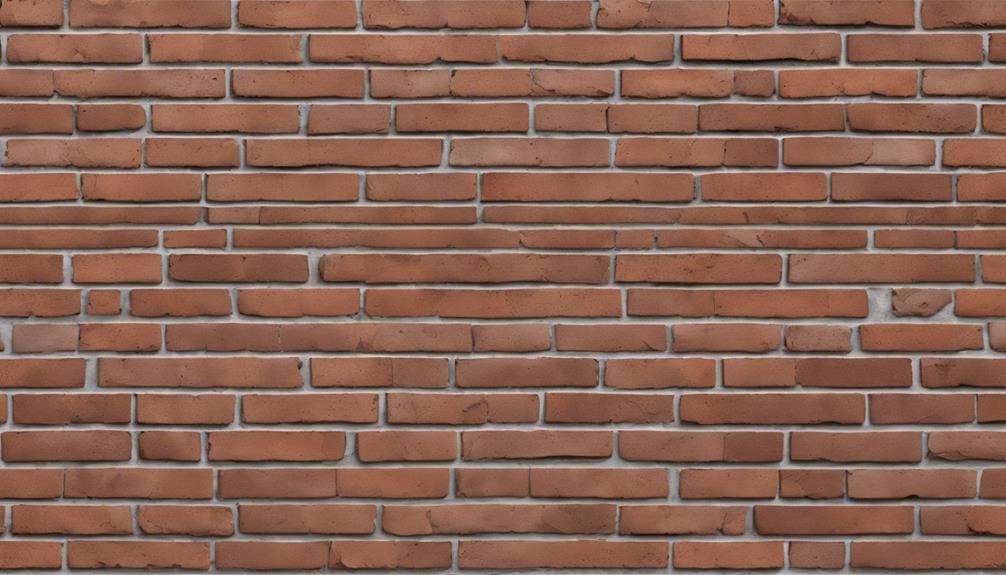
When examining the durability of German homes, it is clear that there is a fascinating range of techniques and materials involved in their construction. From the careful selection of building materials to the innovative structural design principles used, German houses showcase meticulous craftsmanship and engineering expertise.
But what truly sets them apart and makes them so resilient against the test of time and elements? The answer may lie in a combination of traditional building techniques, quality materials, and a deep-rooted commitment to sustainability that permeates every aspect of German housing construction.
Key Takeaways
- German houses prioritize high-quality materials and craftsmanship for durability.
- Energy-efficient design and superior insulation contribute to sustainability.
- Robust construction practices and advanced engineering ensure long-term reliability.
- Weather-resistant features like concrete block-work walls enhance structural integrity.
Traditional Building Techniques in Germany
Traditional German houses stand as testaments to the meticulous craftsmanship and robust construction techniques that have withstood the test of time, showcasing a blend of concrete, rebar, sand, and limestone for unparalleled durability. The use of concrete in traditional German homes not only provides exceptional strength but also enhances energy efficiency. The thick concrete walls act as excellent thermal mass, storing heat during the day and releasing it slowly at night, reducing the need for additional heating or cooling systems. This energy-efficient design is a key feature of German houses, contributing to their sustainability and cost-effectiveness in the long run.
Moreover, the incorporation of rebar within the concrete walls ensures structural integrity, making the houses resilient against external forces such as strong winds or seismic activity. The careful selection of high-quality materials like sand and limestone further enhances the durability of these buildings, resulting in structures that can withstand the test of time while promoting sustainability through energy-efficient design.
Importance of Quality Materials

Utilizing high-quality materials is paramount in ensuring the structural integrity and longevity of German houses. German homes stand out for their robustness, a quality achieved through the meticulous selection of construction materials. Concrete, reinforced with rebar, sand, and limestone, forms the foundation of these structures, providing exceptional durability and strength. Moreover, the emphasis on superior insulation, primarily attributed to the concrete walls, plays a pivotal role in enhancing energy efficiency within German homes.
The choice of construction material in German house building not only guarantees sturdiness but also reflects a commitment to longevity and structural integrity. By incorporating these quality materials, German houses not only withstand the test of time but also offer superior comfort and energy efficiency to residents. The meticulous attention to detail in material selection showcases a dedication to innovation and excellence in construction practices, setting a high standard for durability and sustainability in housing design.
Structural Design Principles in German Homes
When designing German homes, we prioritize robust building materials to ensure structural integrity and longevity.
Efficient floor plans are meticulously crafted to maximize space utilization and enhance functionality.
Quality craftsmanship is paramount in German house construction to guarantee durability and reliability.
Robust Building Materials
In the structural design of German homes, the incorporation of robust building materials like concrete, rebar, sand, and limestone is pivotal to ensuring durability and resilience against various environmental challenges. These materials form a strong foundation for a well-insulated home that can withstand the test of time.
The combination of concrete and rebar provides structural integrity, while sand and limestone enhance the insulation properties of the walls, ensuring energy efficiency. German houses are designed to withstand harsh weather conditions and remain durable even in cold temperatures.
By prioritizing the use of these robust building materials, German homes achieve a high level of strength and longevity, making them a prime example of innovative and sustainable construction practices.
- Concrete and rebar for structural integrity
- Sand and limestone for enhanced insulation
- Durability in harsh weather conditions
Efficient Floor Plans
The efficiency of German floor plans is exemplified through their meticulous design, which prioritizes distinct spaces for various functions, emphasizing compartmentalization for a well-structured living environment. German homes are renowned for their efficient use of space, with layouts that carefully delineate areas for specific activities.
This compartmentalized approach not only enhances organization and order within the house but also contributes to its overall sturdiness. By creating clear divisions between rooms, German houses cater to the need for privacy and functional living. The structured interior layouts reflect a deep-seated preference for well-defined spaces, promoting a sense of solidity and durability in the construction.
These design principles are integral to the German architectural tradition, ensuring that homes aren't only aesthetically pleasing but also highly functional and robust.
Quality Craftsmanship
What structural design principles underpin the quality craftsmanship found in German homes? German builders use a mixture of innovative techniques to ensure the durability and robustness of residential structures. Here are three key elements contributing to the quality craftsmanship in German homes:
- Precision Engineering: German builders employ precise engineering methods to create homes that are structurally sound and stable.
- Advanced Materials: Builders in Germany utilize high-quality materials that enhance the strength and longevity of the homes.
- Attention to Detail: Skilled artisans pay meticulous attention to every aspect of construction, ensuring that each component is flawlessly integrated for optimal structural integrity.
Role of Insulation in Sturdiness
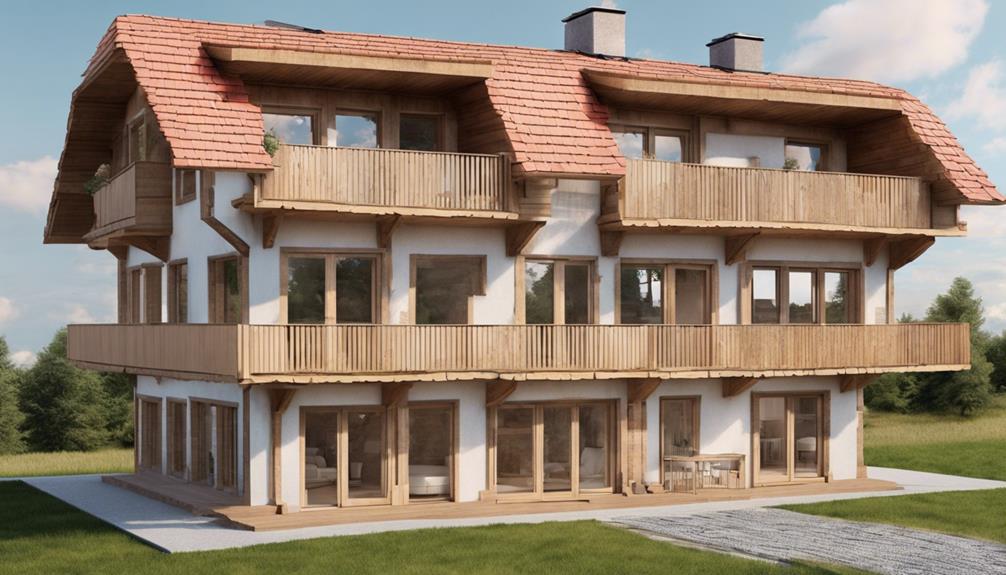
Insulation material types determine the efficacy of thermal regulation within German houses, impacting their energy efficiency significantly.
The influence of weather conditions on the insulation's performance is crucial in maintaining the sturdiness of these structures.
Understanding how these factors interact is key to comprehending the role insulation plays in the overall durability of German homes.
Insulation Material Types
Utilizing high-quality insulation materials such as mineral wool, foam boards, and cellulose is essential for enhancing the sturdiness of German houses. These materials are the cornerstone of construction material for modern homes in Germany due to their exceptional properties.
- Mineral wool: Known for its excellent thermal insulation capabilities, mineral wool effectively regulates indoor temperatures and prevents energy loss.
- Foam boards: These rigid boards provide structural support while insulating against heat, cold, and sound, contributing to the overall stability of the house.
- Cellulose: A sustainable option made from recycled paper, cellulose insulation offers fire resistance and moisture control, ensuring long-term durability for German homes.
Energy Efficiency Impact
In enhancing the sturdiness of German houses, the role of insulation in energy efficiency is paramount. Proper insulation not only keeps the indoor temperature stable but also significantly reduces energy consumption. This dual functionality contributes to the overall durability and longevity of German homes. Here is a breakdown of how insulation impacts energy efficiency in German houses:
| Energy Efficiency Impact of Insulation | Description |
|---|---|
| Reduced Heat Loss | High-quality insulation minimizes heat loss through walls and roofs, leading to energy savings. |
| Thermal Comfort | Insulation ensures consistent indoor temperatures, enhancing comfort levels for occupants. |
| Environmental Sustainability | Energy-efficient insulation reduces the carbon footprint of German houses, promoting sustainability. |
Weather Conditions Influence
To understand the influence of weather conditions on the sturdiness of German houses, we must recognize the pivotal role that insulation plays in maintaining structural integrity and comfort levels. Quality insulation in German homes ensures durability and robustness against external elements.
Here are three key points regarding the impact of insulation on the sturdiness of German houses:
- Insulation in German homes helps regulate temperature effectively, contributing to a stable and comfortable living environment.
- The emphasis on strong insulation in German houses allows them to withstand harsh weather conditions and cold temperatures.
- The insulation not only enhances energy efficiency but also plays a significant role in the overall sturdiness of the structures.
Weather Resistance Strategies
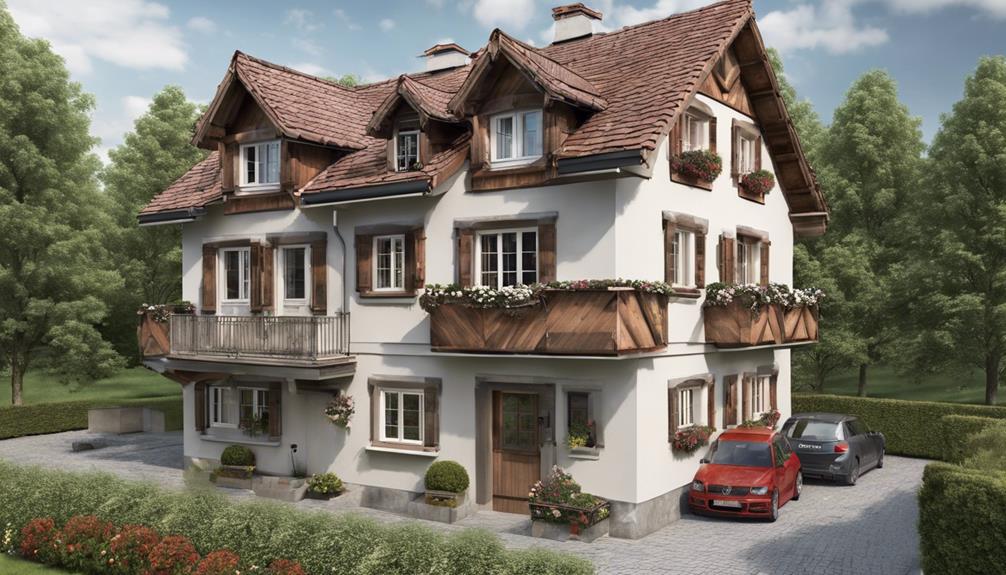
When constructing German houses, a focus on using durable materials and advanced insulation techniques ensures unparalleled weather resistance against harsh elements like wind, rain, and snow. Insulation, particularly in the form of concrete block-work for the walls, plays a vital role in the overall sturdiness and weather resistance of German homes. This insulation not only provides structural integrity but also serves as a barrier against extreme temperatures and weather conditions, ensuring a comfortable living environment year-round.
To delve deeper into the strategies employed for weather resistance in German houses, let's examine a table showcasing key features:
| Weather Resistance Strategies | Description | Benefits |
|---|---|---|
| Concrete Block-work Walls | Utilizes dense concrete blocks for walls | Offers robust insulation, durability, and protection against harsh weather. |
| Advanced Roofing Materials | Incorporates weather-resistant roofing materials | Enhances protection from rain, snow, and wind, increasing the longevity of the structure. |
| High-Quality Windows | Installs windows designed for weather resistance | Prevents heat loss and air leakage, maintaining energy efficiency and interior comfort. |
The Impact of German Engineering

German engineering's impact on the construction of homes is evident in the unparalleled durability and longevity of German houses. The meticulous attention to detail and robust construction techniques employed in German engineering play a pivotal role in shaping the sturdy nature of German houses. Here are some key aspects highlighting the impact of German engineering on housing construction:
- Integration of advanced materials: German houses benefit from the use of high-quality materials like concrete and strong insulation, enhancing their structural integrity and resilience against external elements.
- Emphasis on precision and craftsmanship: German engineering prioritizes precise design and construction methods, ensuring that each component of the house is meticulously crafted to withstand wear and tear effectively.
- Focus on long-term performance: By prioritizing durability and longevity in the design process, German engineering principles result in houses that aren't only sturdy but also reliable over extended periods.
This emphasis on sturdy construction techniques underscores the reputation of German houses for their strength and stability, making them a benchmark in the field of residential construction.
Durability of German Roofing Systems
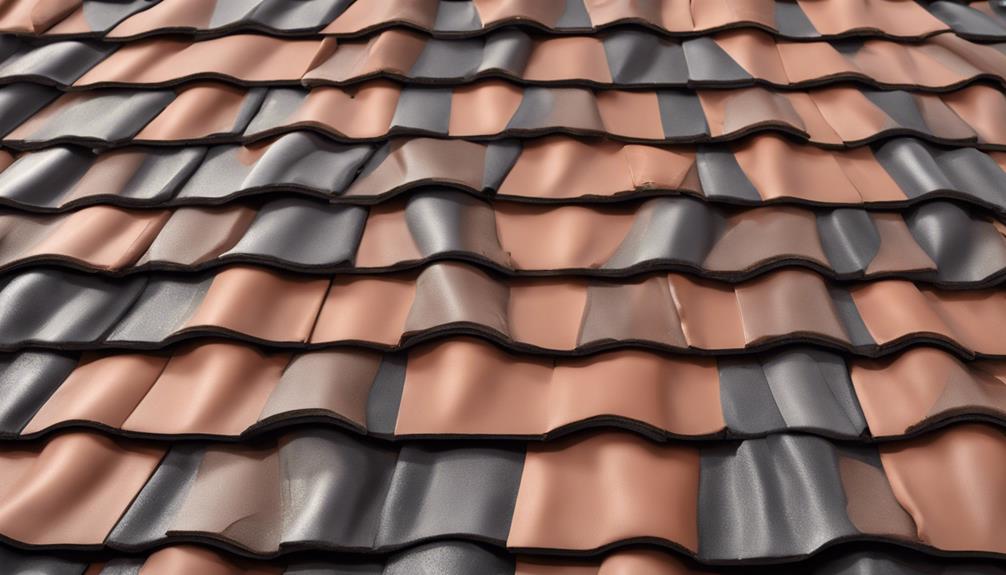
Using state-of-the-art asphalt roof tiles, German roofing systems ensure unparalleled durability and weather resistance. Asphalt roof tiles are a popular choice due to their exceptional longevity and ability to withstand harsh environmental conditions. When properly installed, these tiles significantly contribute to the overall sturdiness and longevity of German houses.
The meticulous design of German roofing systems provides excellent protection against rain, snow, and extreme temperatures, ensuring the interior remains safe and secure. By incorporating high-quality materials, German roofs guarantee long-term durability and structural integrity, making them a reliable choice for homeowners seeking resilient construction solutions.
The use of asphalt roof tiles in German construction showcases a commitment to quality and innovation, emphasizing the importance of selecting materials that can withstand the test of time and nature. This meticulous approach to roofing highlights one of the many facets contributing to the renowned durability of German homes.
Foundation Strength in German Construction
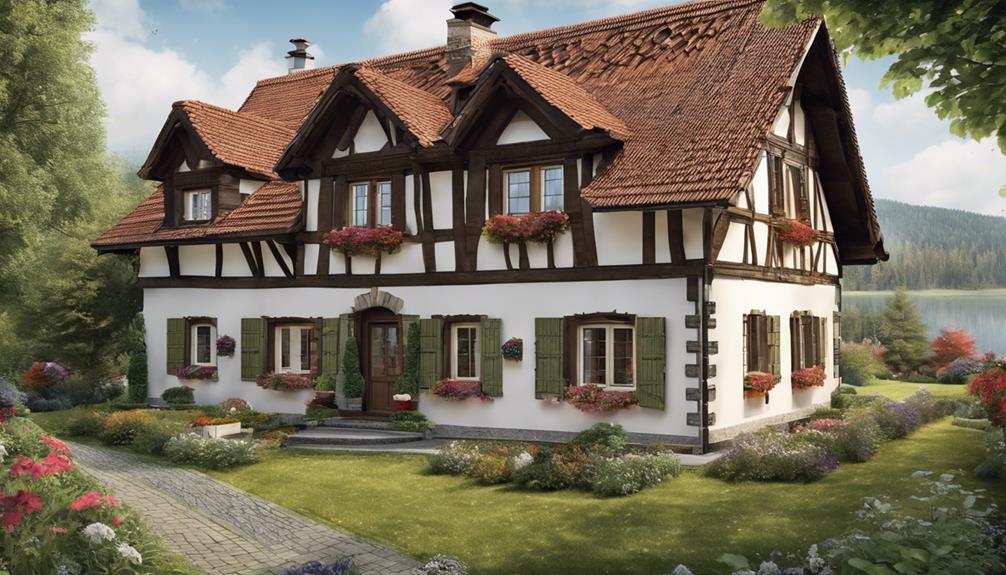
In ensuring the structural integrity and longevity of German buildings, the foundation strength in German construction plays a pivotal role. German houses boast sturdy foundations primarily constructed using concrete, a material known for its robustness and durability.
Reinforced concrete, a specific type of concrete with embedded materials like steel rods or mesh, is commonly employed in German construction for foundation work. This reinforcement technique enhances the foundation's ability to bear heavy loads and resist cracking, settling, or shifting over time.
The stringent German building codes mandate the use of high-quality materials such as reinforced concrete to ensure the foundations can endure a range of environmental conditions. By incorporating these advanced construction practices, German houses are equipped to withstand seismic activity effectively, safeguarding the structures and ensuring their long-term stability and safety.
- German houses utilize sturdy foundations constructed with concrete.
- Reinforced concrete is a common material used in German foundation construction.
- Stringent building codes in Germany require high-quality materials for foundation strength.
Sustainability Practices in German Housing
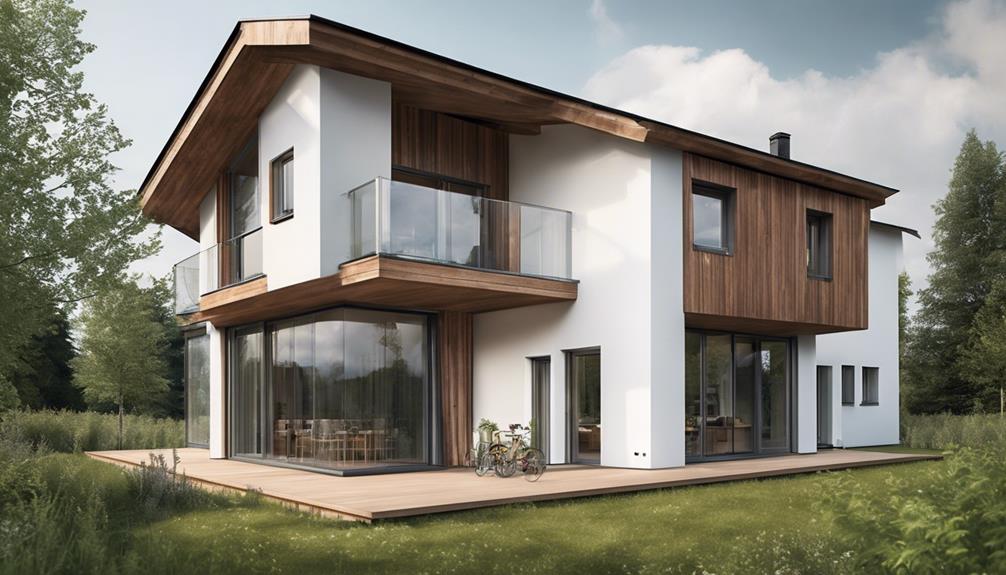
Pivoting from the discussion on foundation strength in German construction, our exploration now turns to the sustainability practices embedded within the realm of German housing.
German houses prioritize sustainability by employing energy-efficient construction techniques. Sustainable materials such as concrete, limestone, and insulated forms are commonly utilized in German housing to ensure durability and long-term energy efficiency, thus reducing the environmental impact.
Insulation plays a crucial role in maintaining energy efficiency, alongside efficient heating systems that contribute to the overall sustainability of German houses. Moreover, government support for sustainable building practices further encourages the adoption of eco-friendly materials in German housing projects.
Frequently Asked Questions
Why Are German Houses so Sturdy?
We believe German houses are so sturdy due to the use of durable materials like concrete, rebar, and limestone in construction. The emphasis on strength and durability in their design, along with robust construction methods such as insulated concrete forms, contributes to their resilience.
Additionally, insulation plays a crucial role in maintaining sturdiness and energy efficiency. This reflects a cultural focus on quality and long-lasting structures.
Why Do German Houses Look Like That?
We believe German houses look robust due to the meticulous use of concrete, rebar, sand, and limestone in construction. This attention to detail ensures durability and longevity, with designs tailored to withstand harsh weather conditions.
The combination of strong materials and construction techniques imparts a sense of security and stability. This commitment to quality and resilience contributes to the sturdy appearance of German houses, making them stand out in their reliability and endurance.
Why Do German Houses Have Two Front Doors?
When exploring the architectural intricacies of German houses, the presence of two front doors stands out. This unique feature serves as a testament to the historical and cultural values of privacy, individuality, and autonomy within a shared living space.
The design of dual entrances accommodated the needs of multiple families or tenants, offering distinct access points and delineating property boundaries. Such deliberate architectural choices underscore the traditional emphasis on independence and functional separation in German housing design.
What Is the Difference Between American and German Houses?
When comparing American and German houses, we notice a stark contrast in construction methods and materials. American homes often lean towards wooden structures, while German houses prioritize concrete, rebar, and limestone for robustness and insulation. This distinction reflects broader architectural preferences and cultural factors, with American homes favoring speed and flexibility in construction and Germans emphasizing durability and energy efficiency. Additionally, the differences between traditional and modern homes in both countries further highlight the evolution of design priorities, such as sustainability and technological integration. These contrasts not only reveal varying approaches to housing but also underscore the influence of climate, resources, and societal values on architectural choices.
Energy efficiency shines in German homes with features like double or triple-paned windows and under-floor heating. The focus on longevity and quality in German construction sets a high standard that stands out from American norms.
Conclusion
In conclusion, German houses stand like fortresses against the elements, built with the precision of a watchmaker and the strength of a mountain. Their sturdy walls, efficient insulation, and durable materials combine to create homes that weather storms and stand the test of time.
Like a well-oiled machine, German engineering ensures that these houses aren't just structures, but symbols of resilience and quality craftsmanship.
- About the Author
- Latest Posts
Introducing Ron, the home decor aficionado at ByRetreat, whose passion for creating beautiful and inviting spaces is at the heart of his work. With his deep knowledge of home decor and his innate sense of style, Ron brings a wealth of expertise and a keen eye for detail to the ByRetreat team.
Ron’s love for home decor goes beyond aesthetics; he understands that our surroundings play a significant role in our overall well-being and productivity. With this in mind, Ron is dedicated to transforming remote workspaces into havens of comfort, functionality, and beauty.
-

 Vetted2 weeks ago
Vetted2 weeks ago15 Best Drip Irrigation Systems to Keep Your Garden Thriving
-

 Vetted1 day ago
Vetted1 day ago15 Best Foot Massagers for Neuropathy to Soothe Your Feet and Relieve Discomfort
-

 Vetted1 week ago
Vetted1 week ago15 Best Sports Laundry Detergents for Keeping Your Activewear Fresh and Clean
-

 Vetted1 week ago
Vetted1 week ago15 Best Tall Toilets for Seniors That Combine Comfort and Safety
-

 Vetted2 weeks ago
Vetted2 weeks ago15 Best Dish Scrubbers to Keep Your Kitchen Sparkling Clean
-

 Beginners Guides4 weeks ago
Beginners Guides4 weeks agoDesigning Your Retreat Center – Essential Tips
-
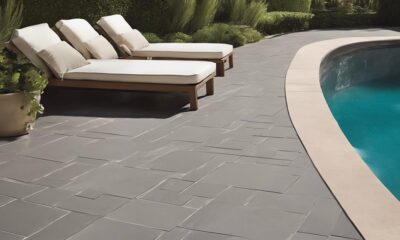
 Vetted4 weeks ago
Vetted4 weeks ago15 Best Tile Adhesives for Outdoor Use – Top Picks for Durable and Weather-Resistant Installations
-

 Beginners Guides4 weeks ago
Beginners Guides4 weeks agoAre Retreats Profitable




